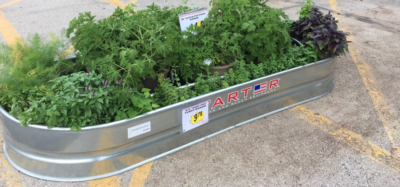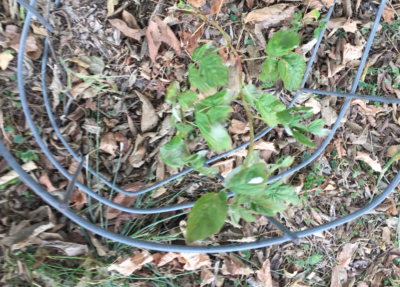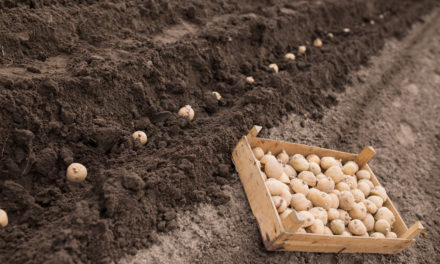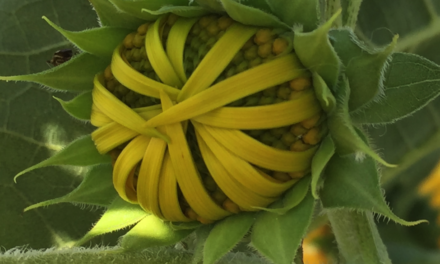Winter is a great time to start planning for spring. It is always my most productive gardening season as I image my gardens without the ravages of predators and with perfect weather conditions. Everything germinates. Moles, voles, groundhogs, raccoons, deer, rabbits and squirrels do not exist in my winter gardening dreams! No vile Japanese beetles, white flies and especially no squash bores can creep upon a defenseless plant and all my tomatoes are free of blemishes.
When it’s freezing outside and there’s a forecast for ice and snow, it’s a great time to focus on gardening. The brief downtime we have in winter is perfect for organizing your equipment and seed packets. While germination rates go down, any leftover seeds you purchased from Buchheit’s extensive displays last year will still sprout. That’s one of the reasons to buy their top-rated seeds over the less expensive packets at the dollar stores.
Every winter I repent. One definition of repenting is expressing sincere regret or remorse about one’s wrongdoings. I repent of once again not planning my future gardens and recording what I planted where. I always assume that my “lightning fast mind,” will be able, with total recall, to remember when I planted that first crop of Little Marvel peas followed by the eggplant and then a crown vetch. Unfortunately, this is never the case! Autumn arrives and while I usually have had wonderful multiple harvests, I can’t always remember what went where or what variety was the most productive or most disease free.
As I sit here, watching the snow fall, I am determined to repent, which also means to turn completely away for the negative behavior. I have every intention of developing an in-depth plan and diligently record my upcoming garden season in a journal.
Good planning requires, for me, the agreement of my husband, Jim. He is the ultimate planner. He has, in his head, plotted out every square foot of our new 3.8 acre homestead. An area of expertise in which he studied during his journeymen carpenter apprenticeship was water flow and drainage. It used to drive me crazy, when we hit a new project, that he would spend so much energy and resources working on getting the water to flow away from the house or barn or digging yet another trench to re-route water. I finally asked him why this was so important. That’s when he shared about his training to survey a field and discover how much “fall” there was to that area. Good drainage and knowing how to re-sculpture the grounds helps to save time and money long-term. Buchheit carries a selection of drainage pipes and tools to make those projects a breeze.
To insure my success, I have designed several different concepts for my long term garden plan onto grid paper. If you are not a stone-ager you will find that modern garden planning apps are an amazing tool for your winter dreaming sessions.
Here’s some simple gardening planning rules to consider.
Plan what to plant where. If you successive plant spinach in full sun in late May, you will have a mess of bolted greenery. Spinach is a cool weather crop that does best in spring or fall. Choosing a schedule of plantings that fit the growing season will be more productive. This holds true for expensive trees and bushes too. I am in competition with Jim’s plan on where he wants to put solar panels as the disputed areas also has the correct drainage and microclimate for cherry trees to survive with protection from the prairie winds we battle in spring and winter here. Another factor of planning is spacing trees and shrubs with sufficient room to maneuver a large mower or zero turn around without scraping the trunks.

Go for bigger containers that will not look cluttered. A garden full of small containers can look disorganized and sloppy. I plan to positon large pots filled with multiple herbs on my back porch where they will get full morning sun and I will have easy assess to them for cooking. I have found that if you center large containers up off the concrete or ground on bricks or even wood blocks the air flow helps to keep them cooler in the heat of summer. More of my large pots will be bundled together making for ease of culivation and watering, taking care to allow for airflow. I plan on doing companion plantings as well as sacrifiacal plants that will take the hit from predidators to protect the real plant producers.
One of the hottest gardening inovation is what I call tank containers. When they land at Buchheit this spring, you need to pull the trigger on that purchase as they usually don’t last long. They come in different sizes and depths. They are a practical way to have a lasting garden bed with none of the issues related to wooden raised beds. One of the secrets to success with them is to fill the bottom fourth with logs. The logs will break down slowly and help to retain moisture to the bed in the heat of summer.
Plan for brambles. There are no better investment when you are planning your long-term garden than brambles. Brambles are berry bushes. Check the price of fresh raspberries per ounce at any store and I hope you will be convinced that, at least some brushes need to be added to your garden.

Here are some raspberries that were placed in the wrong location at our new homestead. I knew they would not thrive there but Jim sometimes need to experience the result of poor planning himself before he is convinced. They have been in the ground two years and its amazing that they’re still alive! In this location, they had to brave the full force of the prairie winter winds. They were in competition with existing tree roots and when the leafy canope of summer grew, they lacked the necessary 8 hours of full sun. There is no way to water them except by toting a bucket. A better plan would be to place them within reach of a water source, in full sun, planted in rich organic soil. I moved them last fall, with Jim’s blessings. The good thing about a workable garden plan is allowing some flexiblity for scenarios like this.
Go big when you go home. A tulip here and a tulip there, standing in a single row like toy soldiers is not nearly as impressive as 50 bursts of color swaying in the spring breeze. Go big. Budget the funds for a really big show. Plant flowers even if you are on a tight budget. Packets of zinnias cost little in comparison to the outstanding display you will enjoy all summer. They also are loved by most pollinators including the migrating monrach. My zinnia patch, grown from seeds I found at Buchheit, had been a bold display at less than 10 dollars worth of seeds.
I hope that you will grab your graph paper and sit down while the snow is flying and plan out your upcoming spring garden. Make all your garden dreams come true!
Be blessed! Ann May






